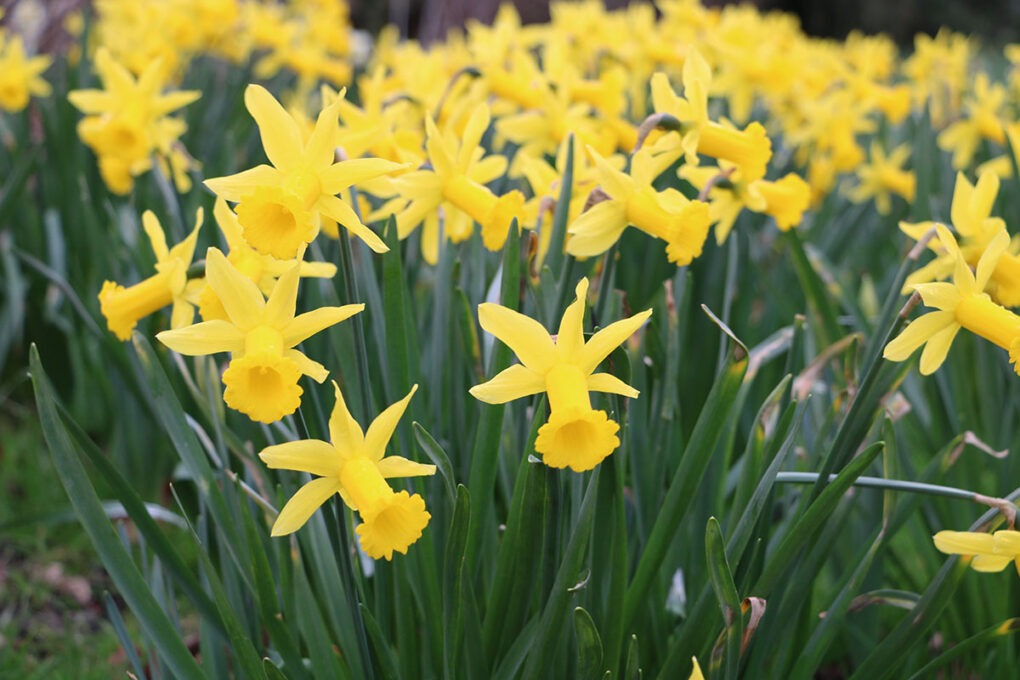
Admire the vibrant display of dazzling daffodils greeting you at the Top Gate entrance in these photos! Each flower boasts its unique charm, and as you scroll down, you’ll delve deeper into the fascinating world of these spring favourites. We’ll explore the specific varieties showcased in this patch, uncovering their individual characteristics, bloom times, and some interesting trivia.
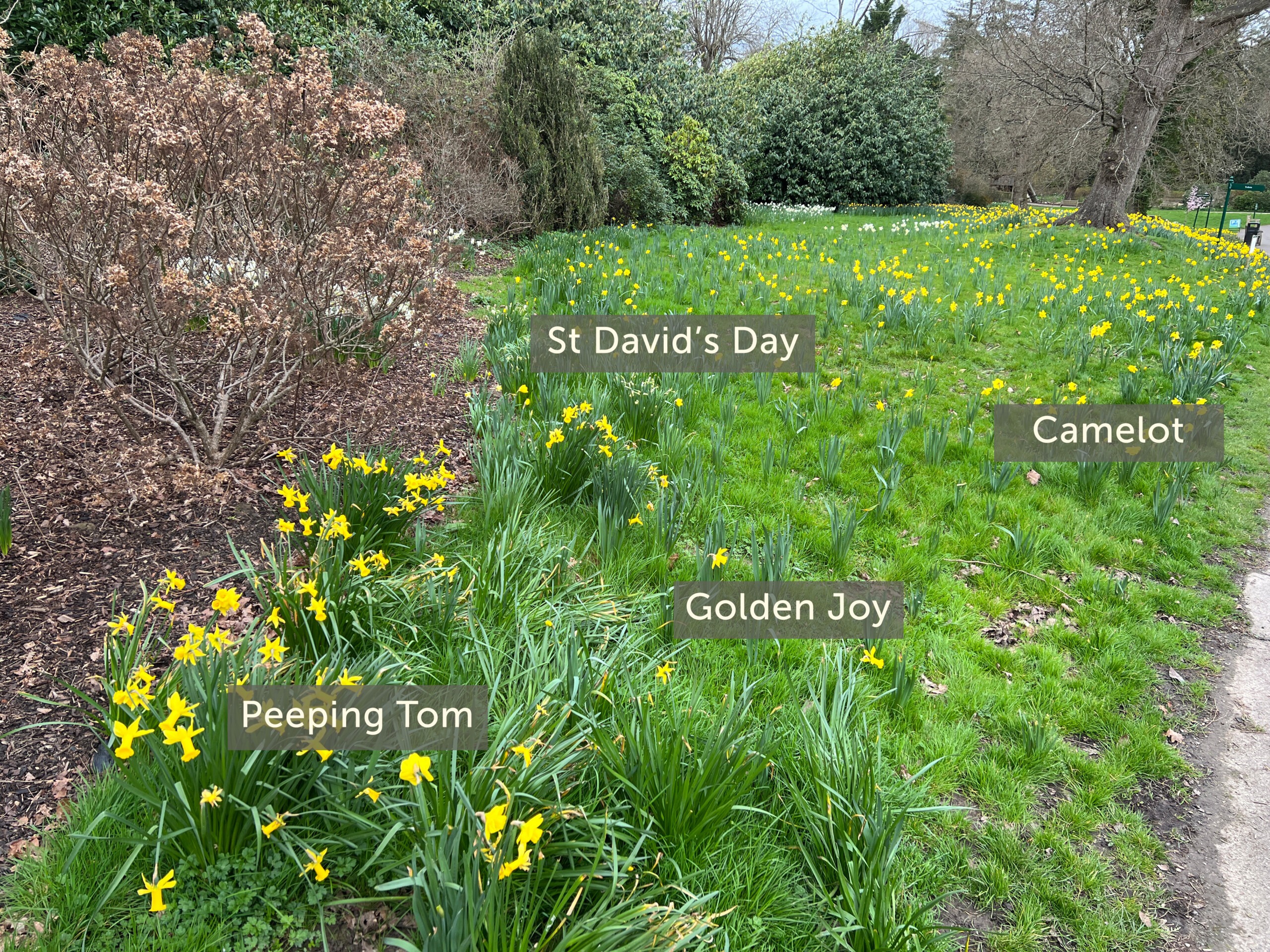
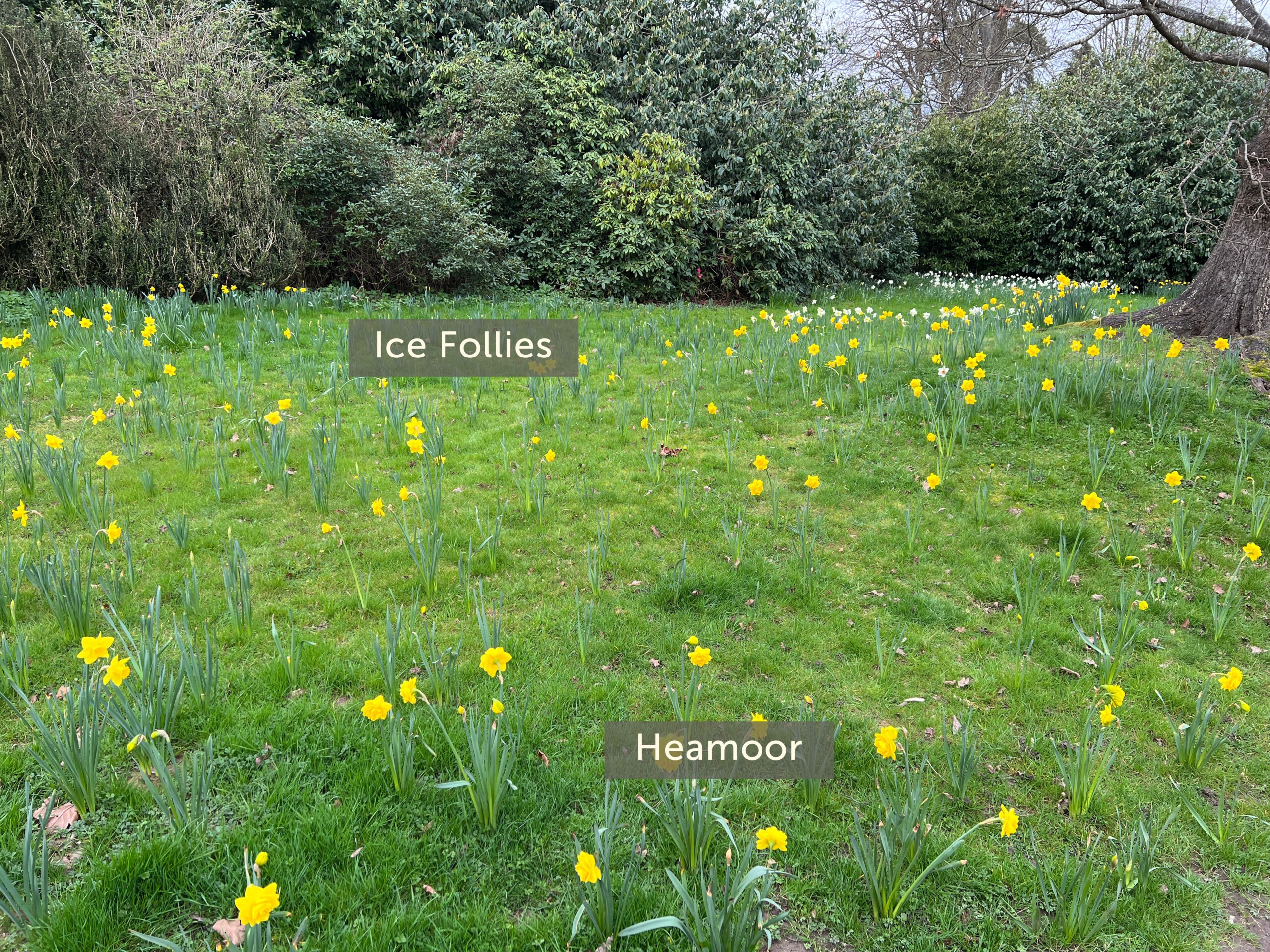
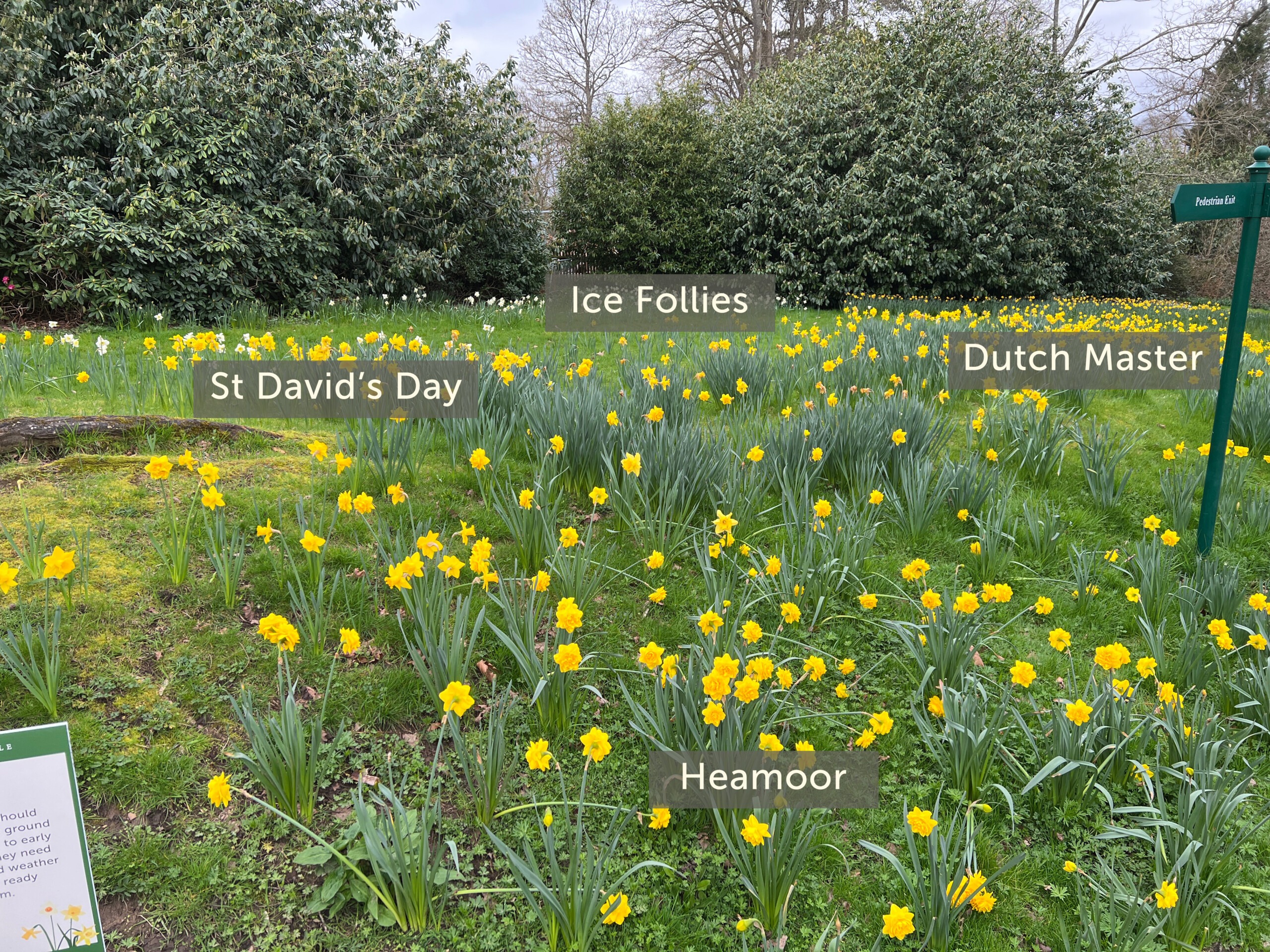
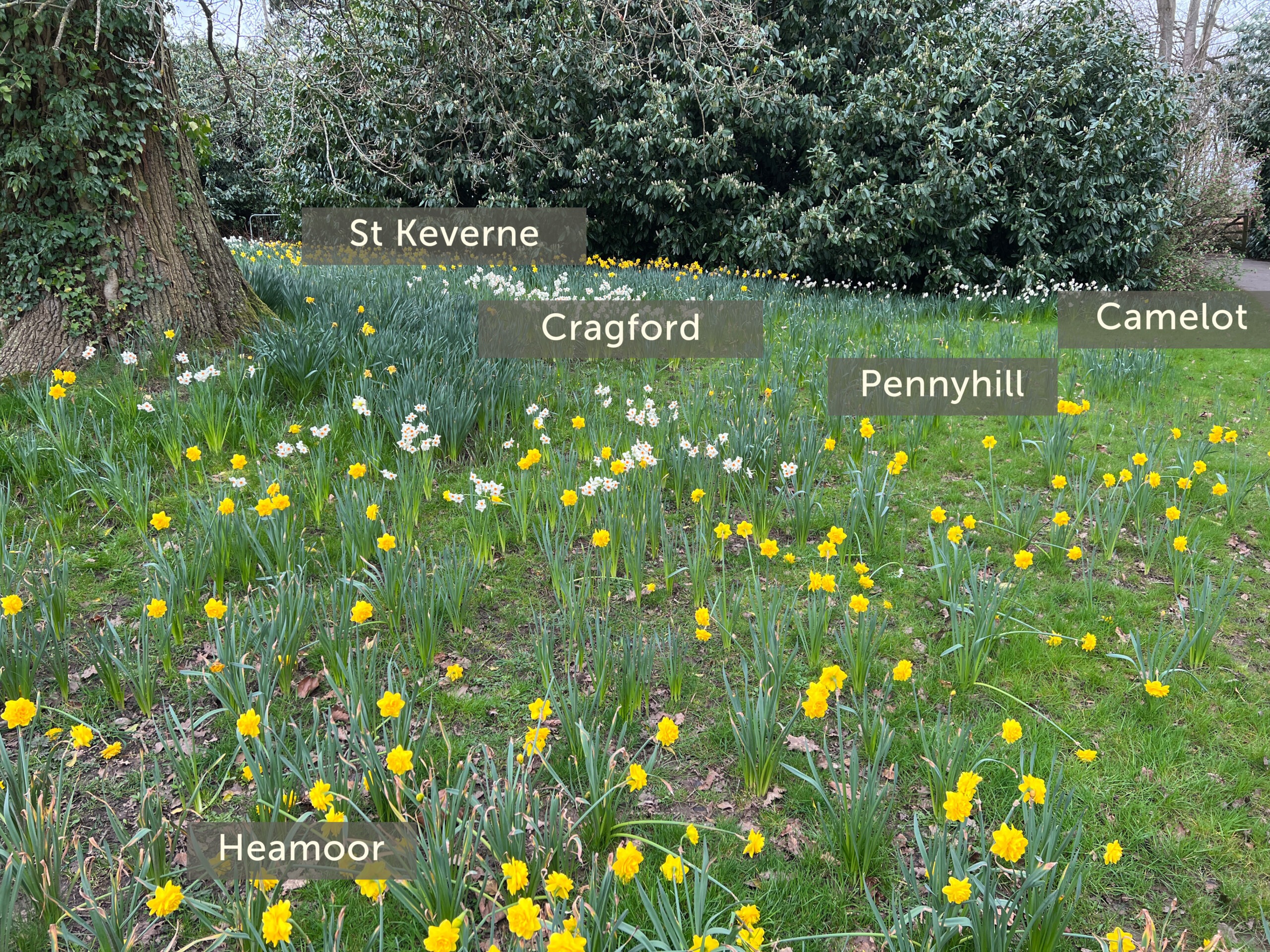
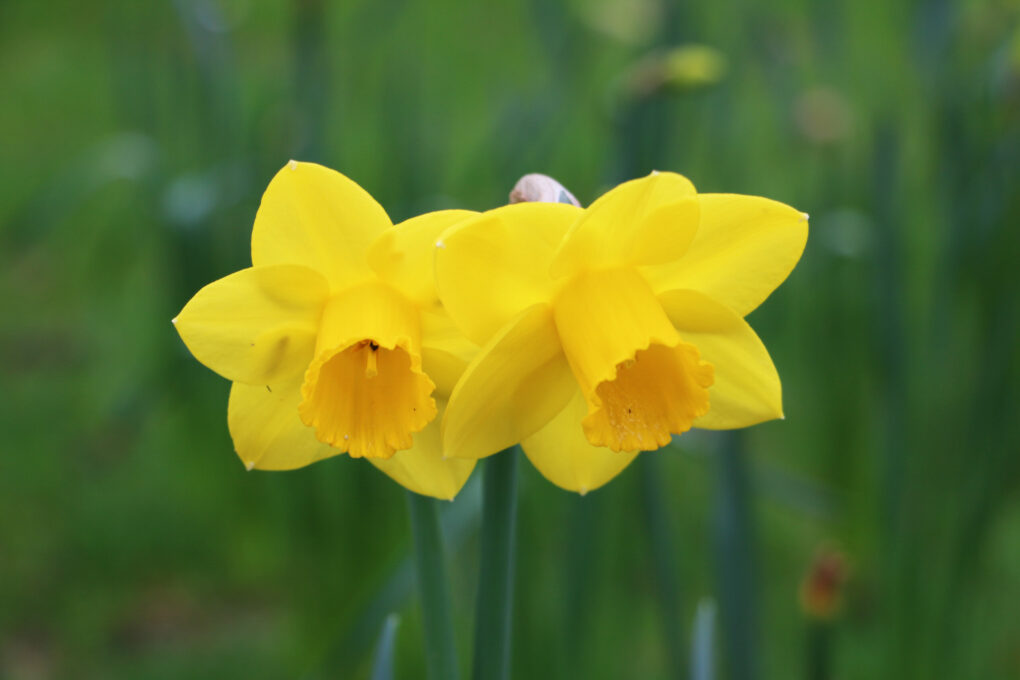
This aptly named variety lives up to its reputation with bright, uniform golden yellow flowers. The blooms boast a classic trumpet-shaped corona, surrounded by smooth, rounded petals (perianth) in the same golden hue. A relatively new variety, bred around 1990 by Dutch hybridizer Jan de Graaff, ‘Golden Joy’ is a cheerful addition to any spring garden. Plant the bulbs in autumn for blooms the following spring. They thrive in a sunny location with well-drained soil, and are considered easy to care for, making them a great choice for beginner gardeners.
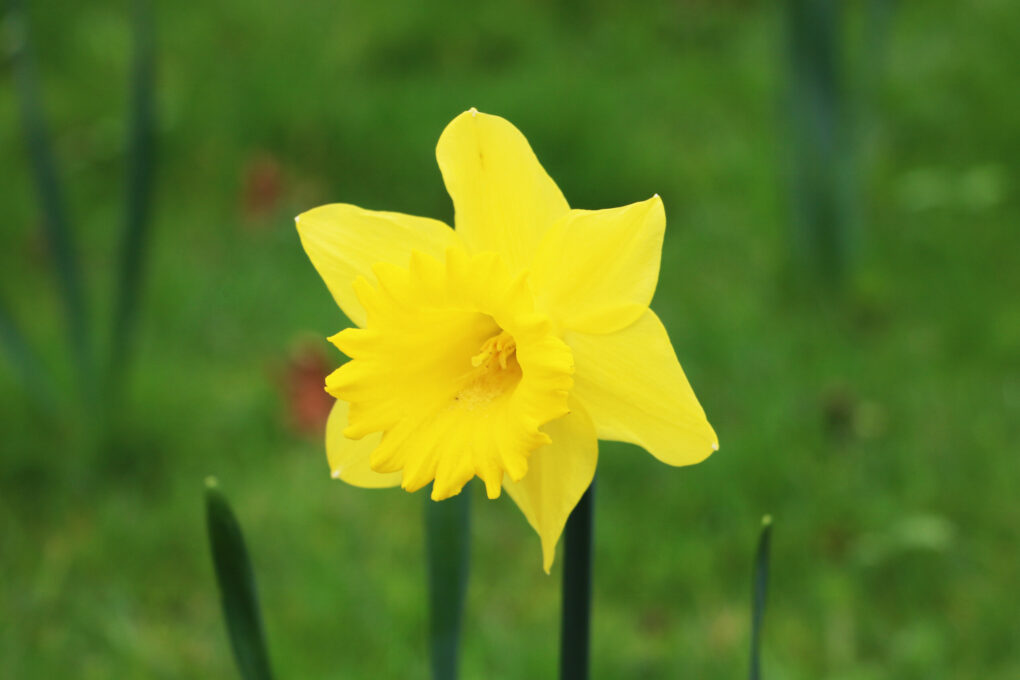
This vibrant daffodil celebrates Wales’ national day with a two-toned bloom. The petals are a bright, clear yellow, surrounding a rich orange corona. Originating in the 19th century, the exact breeder is unknown but it’s become a popular choice for its cheerful colours. Plant the bulbs in autumn for blooms the following spring. They prefer a sunny location with well-drained soil and are generally low-maintenance.
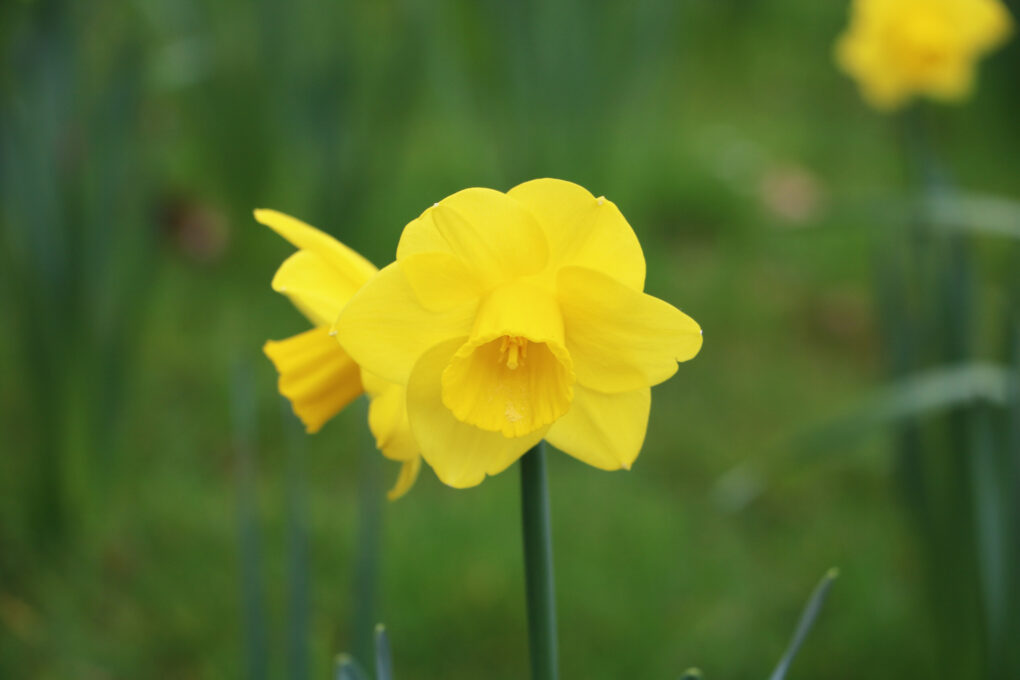
Bring a touch of Arthurian legend to your garden with ‘Camelot’ daffodils. Unlike most daffodils with one bloom per stem, Triandrus varieties like ‘Camelot’ feature clusters of two to three blooms per stem. These boast creamy-white petals surrounding a bright yellow corona, creating an elegant display. Developed around 1930 by English breeder Guy Wilson, ‘Camelot’ is believed to be a descendant of Narcissus triandrus, a wild species native to Spain and Portugal. Plant the bulbs in autumn for blooms the following spring and provide them with a sunny spot with well-drained soil.
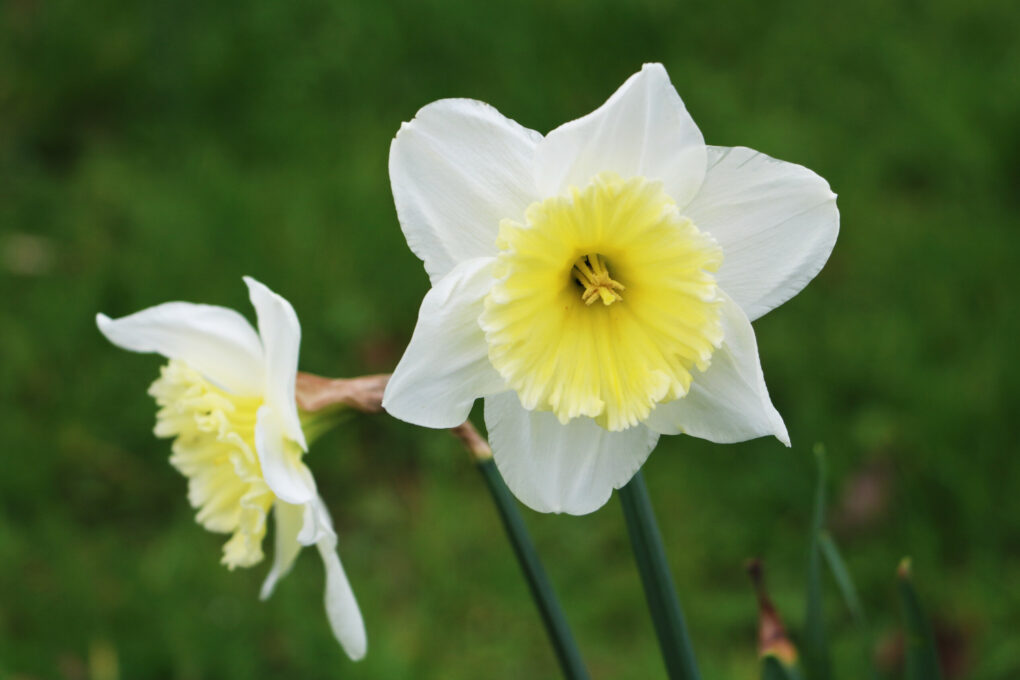
The aptly named ‘Ice Follies’ daffodil boasts a cool and refreshing look. Its blooms feature pristine white, pointed petals that form a perfect starburst around a pale yellow corona. This icy-white flower adds a touch of elegance to spring gardens. Developed by Dutch hybridizer Jan de Graaff in the 1950s, ‘Ice Follies’ is a Tazetta daffodil variety, known for its cluster of multiple blooms per stem. Plant the bulbs in autumn for a springtime display. Like most daffodils, they thrive in a sunny location with well-drained soil.
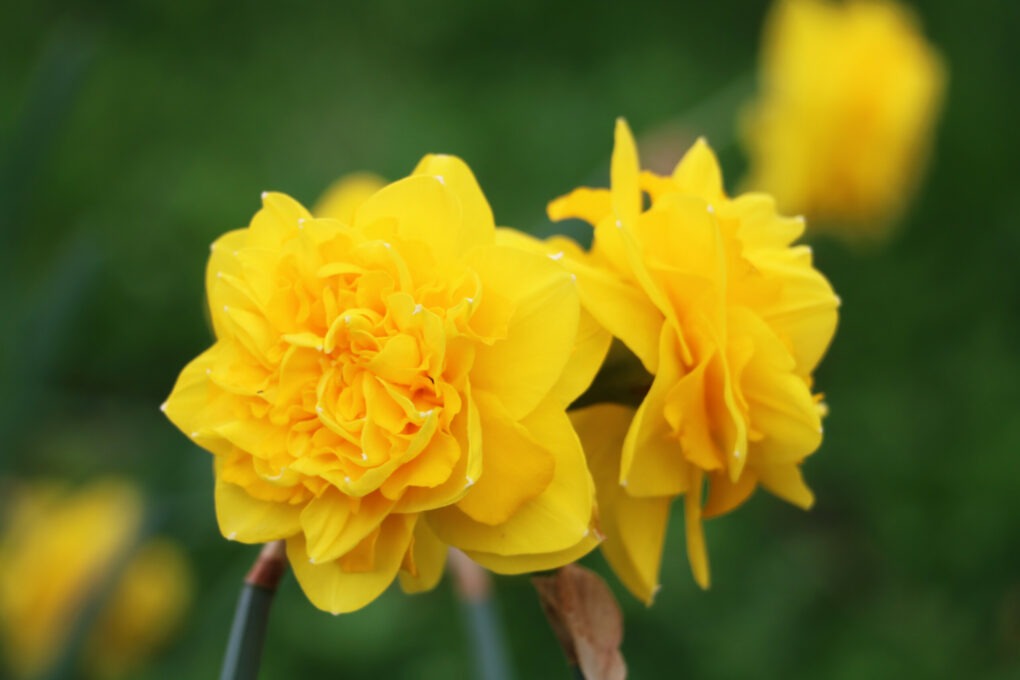
Standing out from the crowd, ‘Heamoor’ daffodils offer a unique bloom with reflexed petals – meaning the petals curve outwards or downwards. This creates a captivating, almost windswept appearance. The rich golden yellow petals surround a bright orange corona, making a bold statement in spring gardens. The exact origins of ‘Heamoor’ are unknown, but it is believed to be a historic variety that has been around for many years. Plant the bulbs in autumn and come spring, these cheerful flowers will brighten your garden. They prefer a sunny location with well-drained soil.
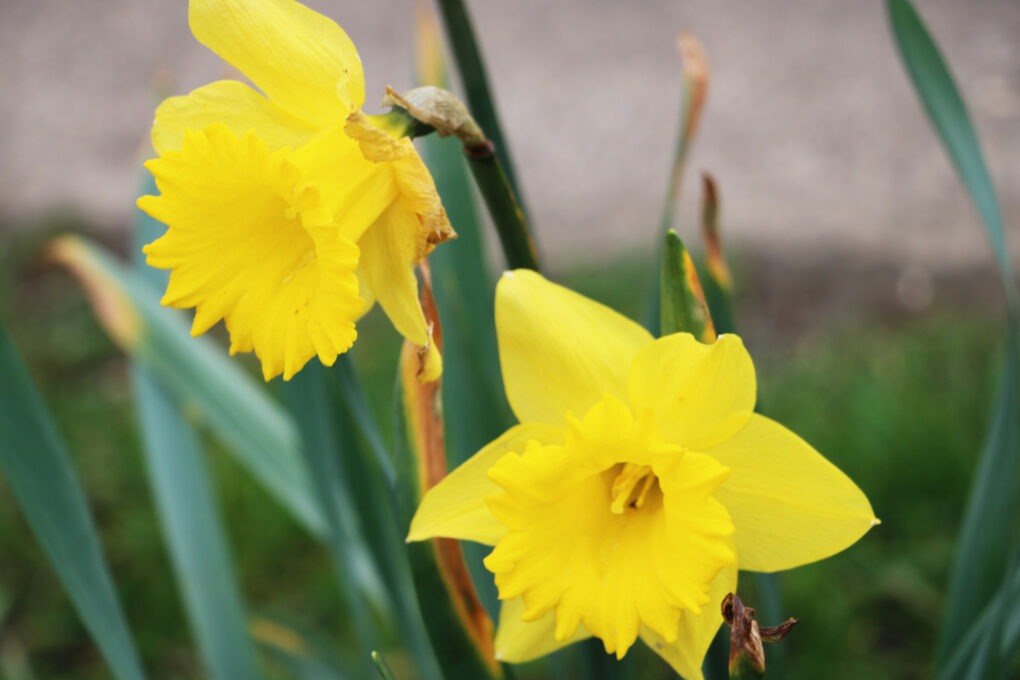
Embrace the artistic spirit with ‘Dutch Master’ daffodils. These vibrant blooms live up to their name, reminiscent of the rich colours found in Dutch Golden Age paintings. Bright yellow petals surround a deep orange corona, creating a stunning colour combination. The exact origins of ‘Dutch Master’ are unknown, but it is thought to be a mid-20th century cultivar. Plant the bulbs in autumn and enjoy the colourful display come spring. Like other daffodils, they prefer a sunny spot with well-drained soil.
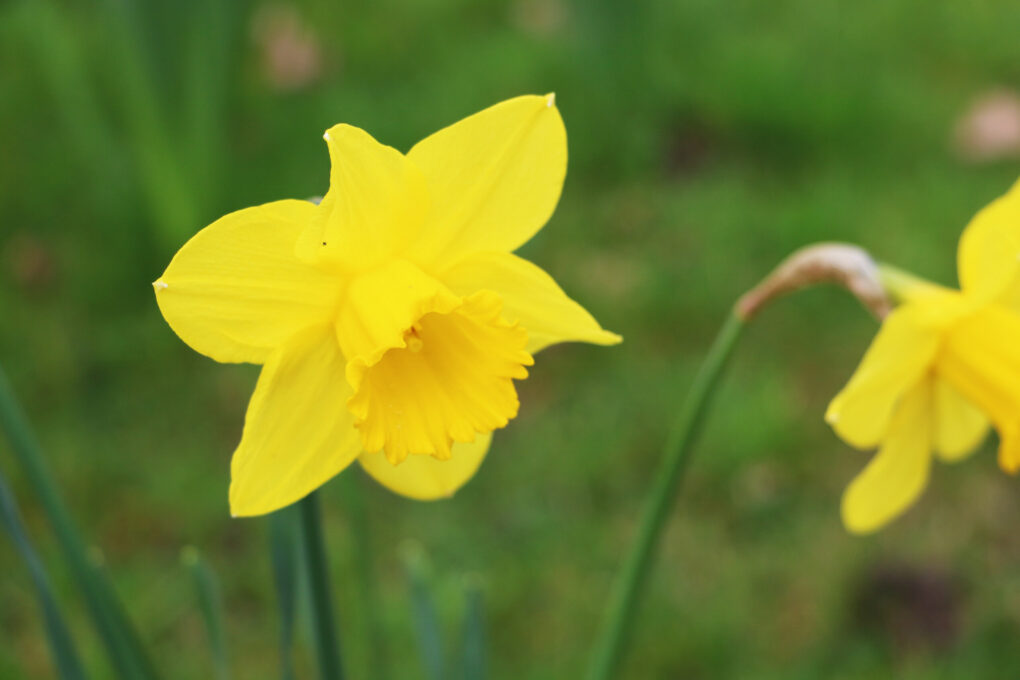
Named after a charming village in Cornwall, England, ‘St Keverne’ daffodils boast a classic and elegant look. Rich golden yellow blooms with a slightly cupped corona add a touch of sunshine to spring gardens. The variety was introduced in 1934 by English breeder Guy Wilson, named after his Cornish homeland. Plant the bulbs in autumn and welcome spring with their cheerful presence in your garden. They thrive in a sunny location with well-drained soil.

‘Pennyhill’ daffodils are a delightful addition to any spring garden, offering a captivating display of colour. Bright yellow petals surround a corona that starts out a deep orange and fades to a lighter yellow over time, creating an interesting bicolored effect. The exact origins of ‘Pennyhill’ are unknown, but it is believed to be a mid-20th century cultivar. Plant the bulbs in autumn and enjoy the blooms come spring. As with most daffodils, they prefer a sunny spot with well-drained soil.
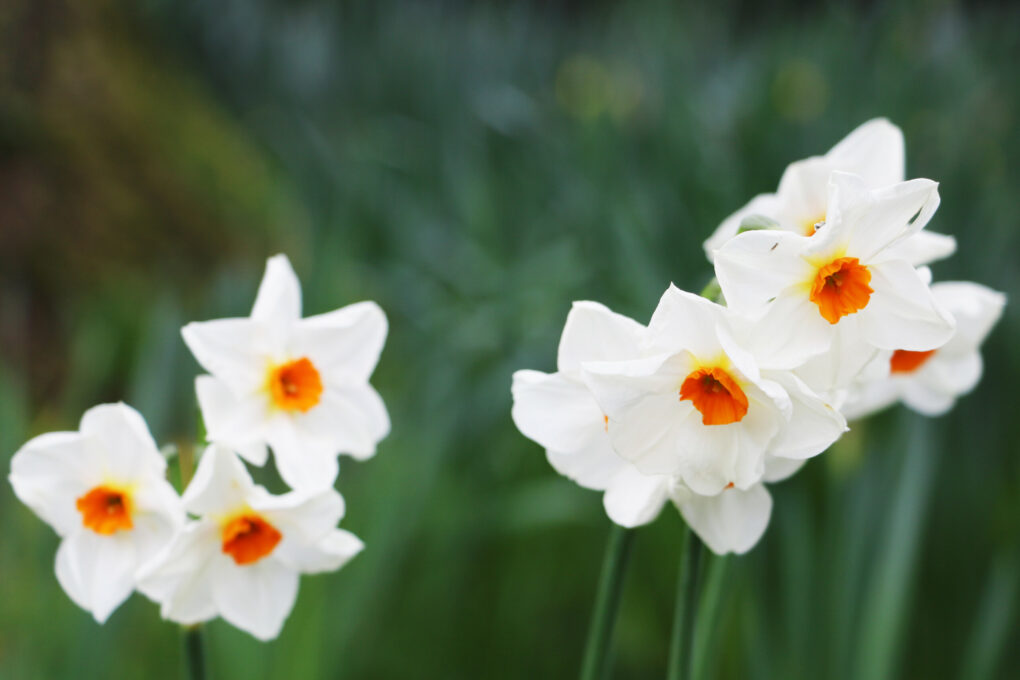
The ‘Cragford’ daffodil boasts a rich history, originating in Ireland sometime in the 19th century. This late-blooming variety is known for its intoxicating fragrance, filling the air with a sweet, citrusy scent. The blooms themselves are a delightful combination of colours. The petals, a soft buttercup yellow, surround a corona that starts a fiery orange and fades to a creamy yellow over time, creating a mesmerizing contrast. ‘Cragford’ is a reliable bloomer and performs well in full sun or partial shade. Plant the bulbs in autumn and come late spring, you’ll be rewarded with its fragrant beauty and historical charm.
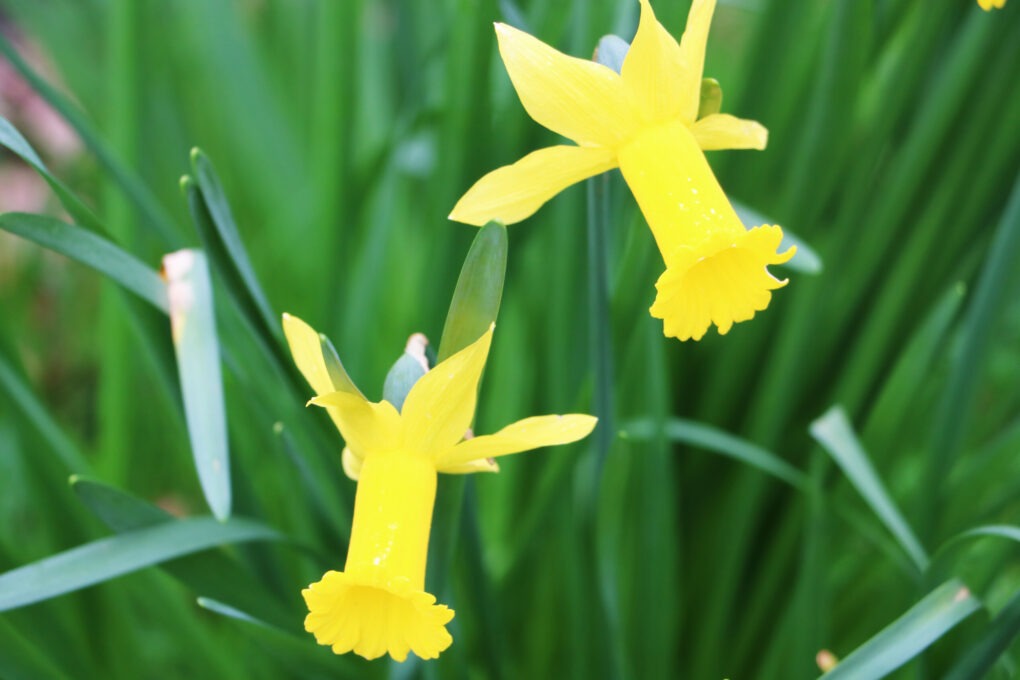
The ‘Peeping Tom’ daffodil isn’t your average spring flower. Unlike its trumpet-shaped brethren, it boasts a unique, reflexed bloom. The petals, a soft creamy-white, curve downwards, revealing a bright orange corona that seems to peek out, earning its intriguing name. This award-winning variety, a recipient of the RHS Award of Garden Merit, is believed to be a sport (a natural mutation) of another cyclamineus daffodil. ‘Peeping Tom’ thrives in partial shade and tolerates slightly heavier soils than most daffodils, making it a versatile choice for gardeners. Plant the bulbs in autumn for blooms in early spring and enjoy its charming, unconventional beauty.
Book your visit to Hever Castle & Gardens.
Within the grounds of the Hever Castle Estate, there are two opportunities for you to stay the night with us.
Hever Castle has played host to many important events and celebrations for over 600 years. In 1903 when William Waldorf Astor set about restoring Hever Castle to its former glory, he added the Astor Wing, to accommodate his family and guests, before creating a lake and the spectacular Italian Garden to house his impressive collection of ancient Greek and Roman statuary.
There are multiple places to eat & drink across the Hever Castle Estate. Select between the Castle & Gardens and Golf Club below to discover more.
Set in the mature grounds of the Hever Castle Estate, Hever Castle Golf Club is a 27 hole Kent golf course that will encourage and inspire all golf enthusiasts.
Set in the mature grounds of the Hever Castle Estate, the Wellbeing Centre consists of five smart treatment rooms.